Caring for your pet goes beyond feeding and playing. It includes keeping them clean, healthy, and comfortable. Grooming your pet isn’t for looks. It’s vital for their health and happiness. A well-groomed pet is a happy pet!
This guide will cover all the pet grooming tips you need to know. Whether you’re looking for DIY pet grooming tips or advice for beginners, we’ve got you covered. You will learn to make grooming safe and stress-free for your pet. This includes using the right tools and avoiding common mistakes.
We’ll also explore grooming for specific needs, like long-haired dogs or anxious pets. We’ll include seasonal care tips, too. This guide is your one-stop resource. It covers home and professional grooming. Let’s ensure your furry friend looks and feels their best!
Also Read

Introduction: The Ultimate Guide to Pet Grooming Tips
Keeping your pet clean and healthy is an essential part of responsible pet ownership. Grooming boosts their looks. It is vital for their health and happiness. Regular grooming keeps your pet’s coat, skin, nails, and teeth in top shape.
This guide helps pet owners, from novices to experts, master grooming. We’ll cover everything from DIY pet grooming tips to professional care advice. You’ll learn to choose the right grooming tools for dogs. You’ll also learn to groom long-haired dogs and avoid mistakes that can harm your pet.
If you’re grooming a puppy at home or starting a pet grooming business, these tips will help you succeed. Let’s get started and ensure your furry friend always looks and feels their best!
Why Grooming Is Essential for Your Pet’s Health and Happiness
Grooming your pet is more than a beauty routine. It’s vital for their well-being. Grooming keeps your pet clean and comfortable. It helps prevent health issues.
Health Benefits of Grooming Grooming prevents issues like matting and skin infections. Long-haired dogs need regular brushing. It prevents painful tangles and improves air circulation to the skin. Nail trimming keeps paws healthy.
It prevents overgrown nails from causing pain or deformity. Also, grooming lets you check for lumps, fleas, or ticks. It helps catch health issues early.
Behavioral Benefits Grooming is also an excellent way to bond with your pet. It builds trust and reduces anxiety, especially for pets who are new to human interaction. A well-groomed pet often feels more relaxed and happier.
The Link Between Grooming and Hygiene. Cleaning your pet reduces odors and allergens. Regular baths, ear cleaning, and dental care prevent infections. They stop harmful buildup. The right products and tools can make dog grooming at home easier. They can ensure hygiene without stress.
Quick Tips for Pet Owners:
- Brush your pet’s coat daily to remove loose fur and debris.
- Trim nails monthly to avoid overgrowth.
- Use hypoallergenic shampoos for pets with sensitive skin.
Want to simplify grooming? Check out affordable grooming tools on AppSumo for easy, stress-free care!
Essential Pet Grooming Tools for Every Pet Owner
Having the right tools is the foundation of an effective pet grooming routine. The right equipment can make grooming easier and more comfortable for both you and your pet. Here’s a detailed look at the essentials for every pet owner.
1. Brushes and Combs
Regular brushing keeps your pet’s coat healthy and reduces shedding. For long-haired dogs, use a slicker brush or undercoat rake to tackle tangles and matting. For short-haired breeds, a rubber curry brush helps remove loose fur effectively.
Quick Tip: Always choose a brush suited to your pet’s coat type to avoid irritation.
2. Nail Clippers or Grinders
Overgrown nails can cause discomfort and even lead to posture issues. Nail clippers or grinders are essential for keeping your pet’s nails short and smooth. If you’re new to this, opt for a grinder, as it’s easier to control and minimizes the risk of injury.
Affiliate Recommendation: Get affordable and easy-to-use pet nail grinders from AppSumo.
3. Shampoos and Conditioners
Choose shampoos specifically formulated for pets to avoid skin irritation. Hypoallergenic and oatmeal-based shampoos are great options for pets with sensitive skin. Use a conditioner for long-haired pets to keep their coat soft and tangle-free.
4. Ear and Eye Cleaning Supplies
Cotton pads and pet-safe ear cleaning solutions help remove debris and prevent infections. For tear stains around the eyes, use a gentle stain remover. Regular cleaning is especially important for breeds prone to ear infections.
5. Grooming Clippers and Scissors
If you groom your pet at home, invest in quality clippers. These are vital for trimming fur on breeds that need regular haircuts. Scissors with rounded tips are perfect for touch-ups in sensitive areas.
6. Towels and Dryers
Use absorbent towels and pet-specific dryers to keep your pet warm and dry after a bath. Human hairdryers can be too hot and noisy, so avoid using them.
Tool Checklist for Beginners
Tool Checklist for Beginners
| Tool | Purpose | Recommended For |
|---|---|---|
| Slicker Brush | Removes tangles and mats | Long-haired breeds |
| Rubber Curry Brush | Reduces shedding | Short-haired breeds |
| Nail Grinder | Smoothens nails | All breeds |
| Oatmeal Shampoo | Soothes sensitive skin | Pets with allergies |
| Ear Cleaning Solution | Prevents infections | All pets prone to ear issues |
Explore high-quality, budget-friendly grooming tools at AppSumo to make grooming stress-free and enjoyable.
Step-by-Step Grooming Tips for Popular Pet Types
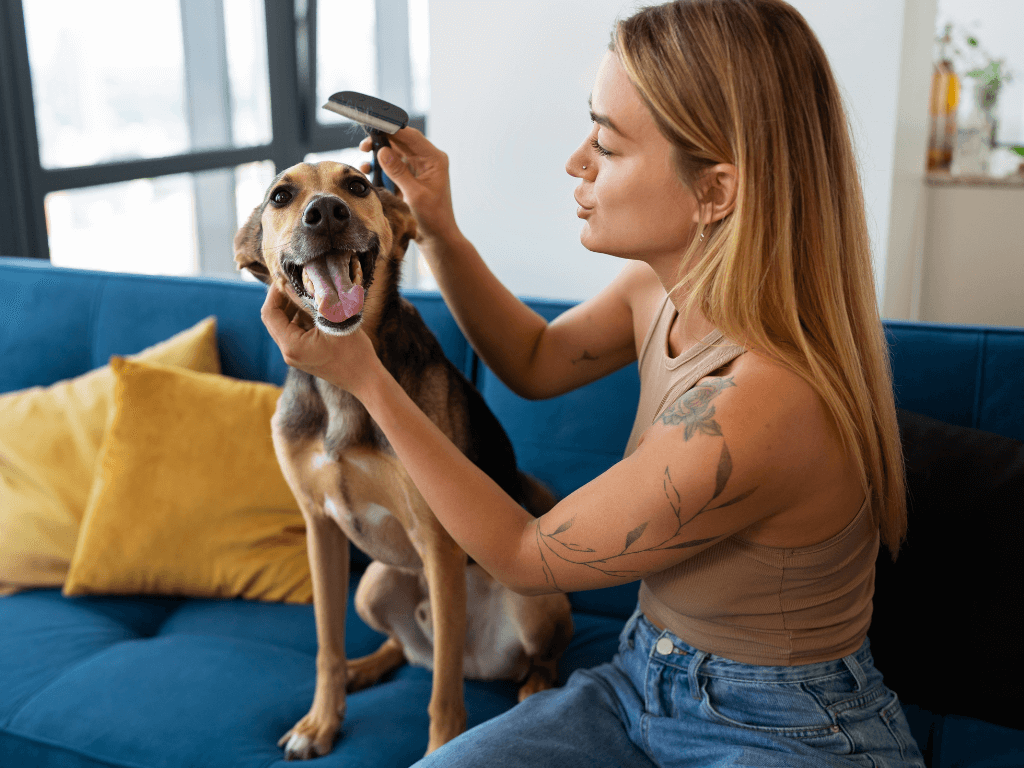
Grooming routines vary depending on the type of pet you own. Each species and breed has unique needs. So, tailor your approach for the best results. Below are detailed steps for grooming popular pets like dogs, cats, and small animals.
Grooming Tips for Dogs
- Brushing the Coat Regular brushing removes loose fur and prevents matting. For long-haired dogs, use a slicker brush or de-shedding tool. Short-haired breeds benefit from rubber curry brushes. They spread natural oils for a shiny coat.
- Bathing Use lukewarm water and pet-safe shampoo. Avoid human shampoos as they can irritate your dog’s skin. Massage the shampoo into the coat. Rinse thoroughly. If your dog has a thick coat, follow up with a conditioner.
- Nail Trimming Trim nails monthly using clippers or a grinder. Be cautious to avoid cutting the quick, which can cause bleeding. For easier handling, use a pet nail grinder like the ones available at AppSumo.
- Cleaning Ears and Eyes Wipe ears with a pet-safe ear cleaner to prevent infections. Clean around the eyes to remove tear stains. This is important for breeds prone to excessive tearing.
- Drying After bathing, use a towel and pet dryer to dry your dog thoroughly. Make sure to keep the dryer on a low heat setting to avoid overheating.
- Brushing the Coat Brushing is essential for all cats, especially long-haired breeds. Use a wide-toothed comb for detangling and a slicker brush to remove loose hair.
- Clipping Claws Use specialized cat nail clippers to trim the tips of their claws. This reduces the risk of scratching and prevents overgrown nails from snagging.
- Bathing Although most cats groom themselves, occasional baths may be needed. Use a mild cat shampoo and ensure the water is shallow to minimize stress.
- Cleaning Ears and Eyes Gently clean the ears with cotton pads and a safe solution. For eye stains, use a soft cloth dampened with warm water.
Grooming Tips for Small Pets (Rabbits, Guinea Pigs, Hamsters)
- Brushing Fur Use a soft-bristle brush to groom small pets weekly. This helps remove loose hair and prevents fur from being ingested during self-grooming.
- Nail Care Trim their nails carefully with small pet nail clippers. This is especially important for rabbits, as overgrown nails can cause discomfort.
- Bathing (If Necessary) Most small pets do not require baths. However, if cleaning is needed, use a damp cloth or a small amount of water with pet-safe soap.
- Regular Health Checks Inspect their fur, skin, and eyes regularly for signs of illness or discomfort. Small pets can hide symptoms, so vigilance is key.
General Tips for All Pets
- Always use calming techniques to reduce anxiety during grooming.
- Reward your pet with treats to create positive associations with grooming sessions.
- Create a routine to ensure consistent care.
Affiliate Recommendation: Equip yourself with top-rated grooming tools and supplies from AppSumo to simplify your pet grooming experience.
DIY vs. Professional Grooming: Pros and Cons
You have two main options for grooming your pet. You can do it yourself at home or hire a professional groomer. Both approaches have their advantages and drawbacks. Understanding these can help you make the best choice for your pet’s needs.
DIY Grooming
Pros
- Cost Savings: Grooming at home saves money, especially for breeds requiring frequent upkeep.
- Convenience: You can set your own schedule and groom your pet in the comfort of your home.
- Bonding Opportunity: Grooming strengthens the bond between you and your pet, building trust and familiarity.
Cons
- Skill Requirement: Certain grooming tasks, like clipping nails or trimming fur, require skill and patience to avoid injuries.
- Initial Investment: Purchasing high-quality grooming tools such as clippers, brushes, and nail grinders can be costly. Affordable options are available on AppSumo.
- Time-Consuming: Grooming at home, especially for larger or more active pets, can take significant time and effort.
Professional Grooming
Pros
- Expert Care: Professional groomers are trained to handle complex tasks like breed-specific cuts and sensitive grooming areas.
- Comprehensive Services: Most groomers include additional services, such as ear cleaning, teeth brushing, and anal gland expression.
- Less Stress for Owners: If your pet is challenging to handle, a professional can manage their grooming needs safely and efficiently.
Cons
- Higher Costs: Regular professional grooming can become expensive, particularly for breeds requiring frequent visits.
- Travel and Scheduling: You’ll need to find a reputable groomer and work around their availability, which can be inconvenient.
- Pet Anxiety: Some pets may feel anxious in unfamiliar environments, making the experience stressful for them.
Making the Right Choice
- For Busy Owners: Professional grooming may be more practical, especially for pets with high-maintenance coats or complex needs.
- For Skilled DIYers: If you have the time and patience to learn, doing it yourself can be a rewarding and cost-effective option.
Consider combining both options. Do routine tasks, like brushing and nail trimming, at home. Reserve occasional visits to professionals for more intricate grooming.
Affiliate Recommendation: Equip your home grooming station with high-quality tools from AppSumo to make DIY grooming easier and safer.
Common Pet Grooming Mistakes to Avoid
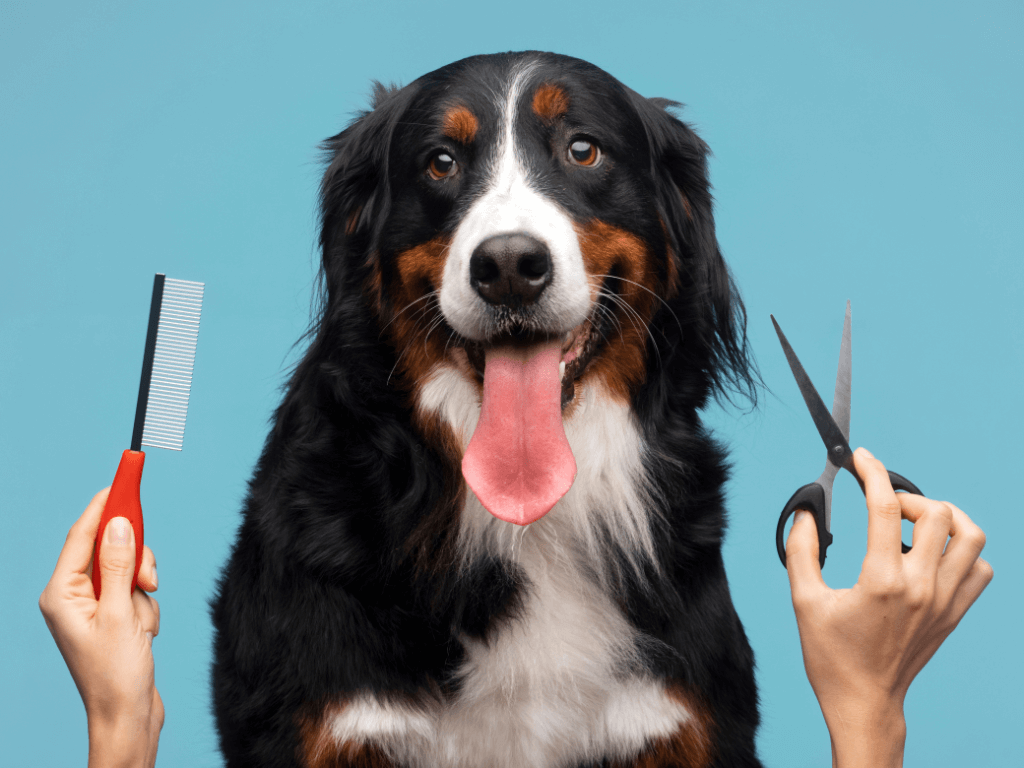
Grooming your pet can be an enjoyable and rewarding experience, but certain mistakes can turn it into a stressful or even harmful process. Avoid these common pitfalls to ensure your pet stays comfortable and healthy during grooming sessions.
1. Skipping Regular Grooming Sessions
Neglecting to groom your pet can cause matted fur, overgrown nails, and poor hygiene. For long-haired dogs, skipping even a week of brushing can result in painful tangles. Make grooming a consistent part of your routine to keep your pet looking and feeling their best.
2. Using the Wrong Tools
Not all grooming tools are created equal. Using the wrong brush or clippers can cause discomfort and even injury to your pet. A slicker brush can remove mats in long-haired pets. But, it may irritate short-haired breeds. Invest in high-quality, pet-specific grooming tools. Check out AppSumo for affordable options that suit every pet type.
3. Over-Bathing Your Pet
Bathing your pet too often can dry and irritate their skin. It strips away natural oils. Dogs need a bath every 4–6 weeks. Cats groom themselves and need fewer baths. Use pet-safe, hypoallergenic shampoos to protect sensitive skin.
4. Trimming Nails Too Short
A common mistake is cutting nails too short. It can cause pain and bleeding by hitting the quick. Always trim nails gradually and use a nail grinder for greater precision. This tool, available at AppSumo, is perfect for avoiding accidental injuries.
5. Ignoring Sensitive Areas
Areas like the ears, eyes, and paws require extra care. Using harsh products or the wrong techniques can lead to infections or discomfort. Always use a gentle ear cleaning solution and wipe around the eyes with a damp cloth to avoid irritation.
6. Grooming When Your Pet is Stressed
Grooming an anxious, uncooperative pet can increase their stress and make it harder. Use calming techniques, like speaking softly or giving treats. This will create a positive grooming experience.
7. Forgetting Seasonal Adjustments
Grooming needs to change with the seasons. In winter, pets may get dry skin and need more moisture. In summer, brush them often to manage shedding. Tailor your grooming routine to the time of year for optimal results.
Quick Tips for Error-Free Grooming
- Always brush your pet before bathing to remove tangles and loose fur.
- Trim small sections of nails at a time to avoid overcutting.
- Use lukewarm water for baths to keep your pet comfortable.
Affiliate Recommendation: Avoid these mistakes and groom like a pro with high-quality tools from AppSumo.
Seasonal Grooming Tips: How to Adapt for Weather Changes
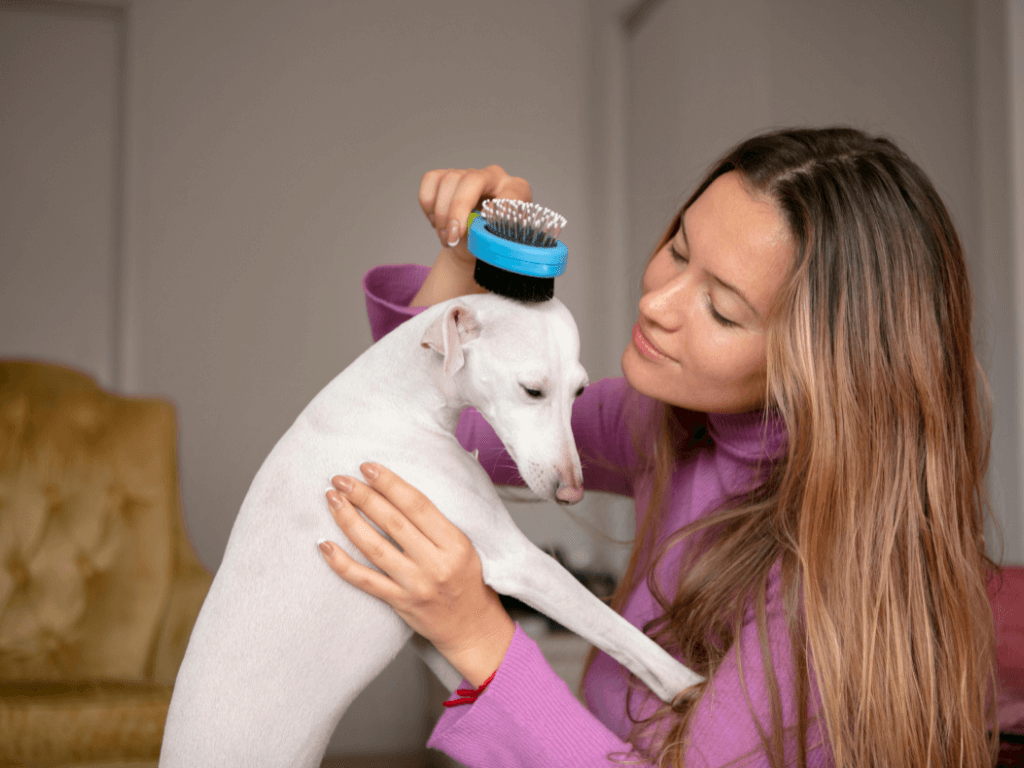
Just like humans, pets have different grooming needs depending on the season. Adapting your grooming routine to the weather keeps your pet healthy and comfy all year. Below are tips for grooming during summer, winter, and transitional seasons.
Summer Grooming Tips
- Brush Frequently to Manage Shedding: Many pets shed more in the summer to get rid of their thick winter coats. Brushing your pet 2–3 times a week removes loose fur and prevents overheating. Use a de-shedding tool for breeds with thick undercoats, like Huskies or Retrievers.
- Trim, Don’t Shave: Shaving your pet’s fur might seem like a way to keep them cool, but it can expose their skin to harmful UV rays. Instead, trim excess hair, especially for long-haired dogs, to make them more comfortable.
- Hydration is Key: Skin can dry out in the heat, so keep your pet hydrated and use moisturizing shampoos. Get pet-safe products for summer grooming on AppSumo.
Winter Grooming Tips
- Minimize Bathing: Over-bathing in winter can strip your pet’s skin of essential oils, leading to dryness. Bathe only when necessary and always use lukewarm water and a gentle pet shampoo.
- Focus on Paws: Ice, snow, and salt can damage your pet’s paw pads. Trim fur around their toes to prevent ice clumps, and apply paw balm to keep them moisturized.
- Dry Thoroughly: After baths or outdoor walks, dry your pet completely to avoid chilling. Use a pet-specific dryer or absorbent towels to speed up the process.
Spring and Fall Grooming Tips
- Handle Seasonal Shedding: Spring and fall are prime shedding seasons for many pets. Brush daily during these times to manage excess fur and keep your home clean.
- Watch for Allergies: Seasonal changes can trigger skin sensitivities in pets. Use hypoallergenic grooming products to soothe irritated skin.
- Inspect for Pests: Fleas and ticks are more active during warmer months. Check your pet’s coat. Use preventive treatments your vet recommends.
General Tips for Year-Round Seasonal Care
- Adjust grooming tools to match your pet’s needs. For example, use slicker brushes in shedding seasons. Use nail grinders for winter care.
- Stay consistent with grooming routines to prevent buildup of issues over time.
- Always monitor your pet’s skin and coat condition to adapt to seasonal changes early.
Affiliate Recommendation: Simplify seasonal grooming with professional-grade tools available on AppSumo. These products are affordable, durable, and pet-safe.
Grooming Tips for Pets with Special Needs

Pets with special needs—like seniors, anxious, or sick ones—need extra care when grooming. A tailored approach keeps them clean and healthy. It also ensures their comfort and well-being.
Grooming Senior Pets
- Gentle Brushing Older pets may have sensitive skin or joint pain. So, gentle grooming is essential. Use soft-bristle brushes or grooming gloves to remove loose fur without causing discomfort.
- Short, Frequent Sessions Break grooming into shorter sessions to avoid tiring them out. Focus on one area at a time, such as brushing the coat or trimming nails.
- Nail Trimming and Paw Care Senior pets may walk less, which means their nails grow longer. Trim nails regularly using a pet nail grinder to prevent overgrowth and discomfort. Check out AppSumo for easy-to-use grooming tools that make the process safe.
- Monitor Skin and Coat Aging can cause dry skin or thinning fur. Use hypoallergenic shampoos and conditioners to keep their coat hydrated and soft.
Grooming Anxious Pets
- Create a Calm Environment Grooming can be stressful for anxious pets. Choose a quiet space, play soothing music, and use calming sprays or treats to reduce anxiety.
- Desensitization Techniques Introduce grooming tools gradually. Let your pet sniff the brush or clipper before using it. Reward them with treats to create a positive association.
- Go Slow Take your time, especially when trimming fur or nails. Short sessions with breaks help prevent overwhelming your pet.
- If grooming stresses your pet, consider a professional service. Look for groomers experienced in handling anxious animals.
Grooming Pets with Medical Conditions
- Consult Your Vet Always consult a veterinarian before grooming pets with skin conditions, wounds, or other medical issues. They may recommend specific products or techniques.
- Use Medicated Shampoos For pets with allergies or infections, use vet-approved medicated shampoos. Avoid harsh products that could worsen their condition.
- Handle Gently Be mindful of any sore spots or injuries. Use grooming tools with rounded edges to avoid irritation.
- Check Frequently Regularly inspect your pet for signs of worsening symptoms, such as redness, swelling, or discomfort during grooming.
Quick Tips for Grooming Special Needs Pets
- Always prioritize your pet’s comfort and safety over aesthetics.
- Use high-quality grooming tools designed for gentle handling. Check out AppSumo for affordable options.
- Reward your pet with treats and praise to make grooming a positive experience.
The Role of Nutrition in Pet Grooming
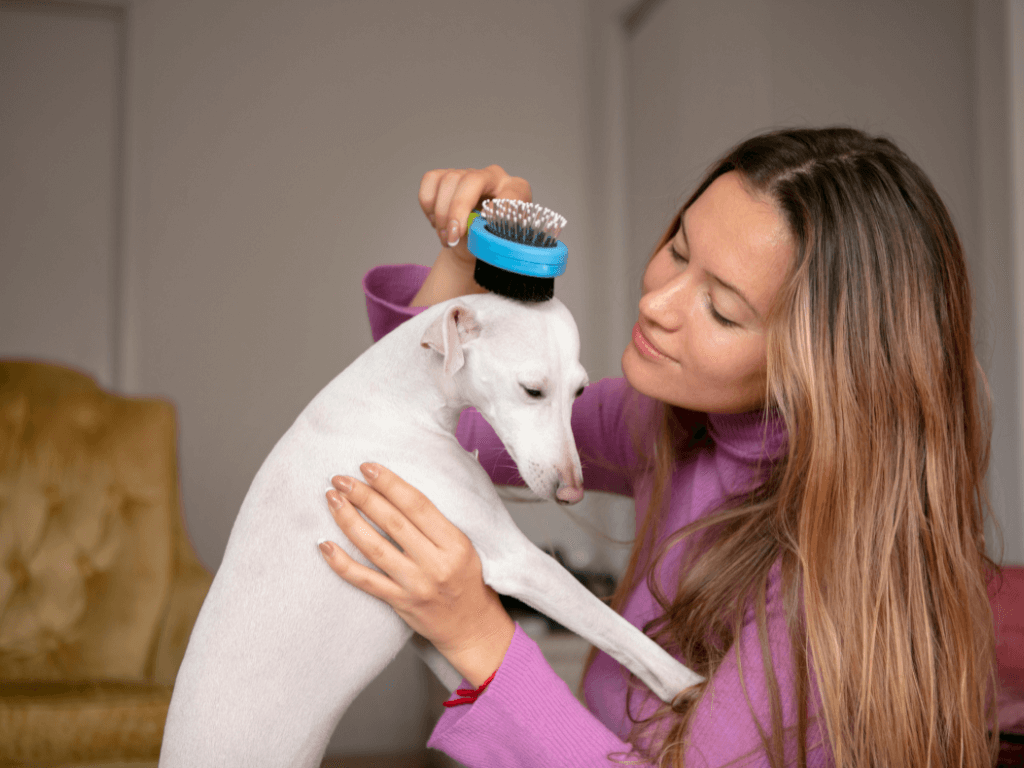
Grooming doesn’t start with tools or shampoos—it begins with what’s in your pet’s bowl. Proper nutrition plays a vital role in maintaining your pet’s coat, skin, and overall health. A well-balanced diet ensures your pet looks and feels their best.
How Diet Affects Your Pet’s Coat and Skin
A shiny, healthy coat is often a reflection of a nutrient-rich diet. Omega-3 and omega-6 are essential fatty acids. They make fur soft and glossy, preventing dryness and irritation. Protein-rich foods are crucial for hair growth and repair, especially for long-haired dogs.
Inadequate nutrition can lead to dull coats, excessive shedding, and skin problems. If your pet has flaky or irritated skin, consult your vet. Ask about dietary changes or supplements. Adding fish oil or flaxseed to your pet’s diet may boost skin and coat health.
The Link Between Nutrition and Grooming Challenges
Pets with poor diets are more likely to shed and get matted fur. They may also get brittle nails and cracked paw pads, which makes grooming harder. Ensuring a balanced diet minimizes these issues, making grooming easier and more effective.
Vitamins and Supplements for Better Grooming Results
- Biotin and Vitamin E: Promote strong nails and healthy skin.
- Zinc: Reduces dandruff and helps prevent fur loss.
- Omega Fatty Acids: Enhance coat texture and shine.
Speak to your vet about adding these supplements if your pet’s coat or skin shows signs of poor health. For easy supplementation, consider grooming supplies enriched with vitamins and oils, available at AppSumo.
Hydration and Its Impact
Water is often overlooked in grooming talks. But, it is vital for skin and coat health. Dehydrated pets are more prone to flaky skin and dull fur. Ensure your pet has access to clean, fresh water throughout the day.
Nutrition Tips for Pet Owners
- Feed a diet tailored to your pet’s breed, age, and activity level.
- Incorporate natural oils, like fish or coconut oil, into their meals.
- Choose high-quality, vet-approved pet food to avoid fillers and allergens.
Affiliate Recommendation: Boost your pet’s nutrition and grooming success with tools and products from AppSumo.
Leveraging Technology for Pet Grooming
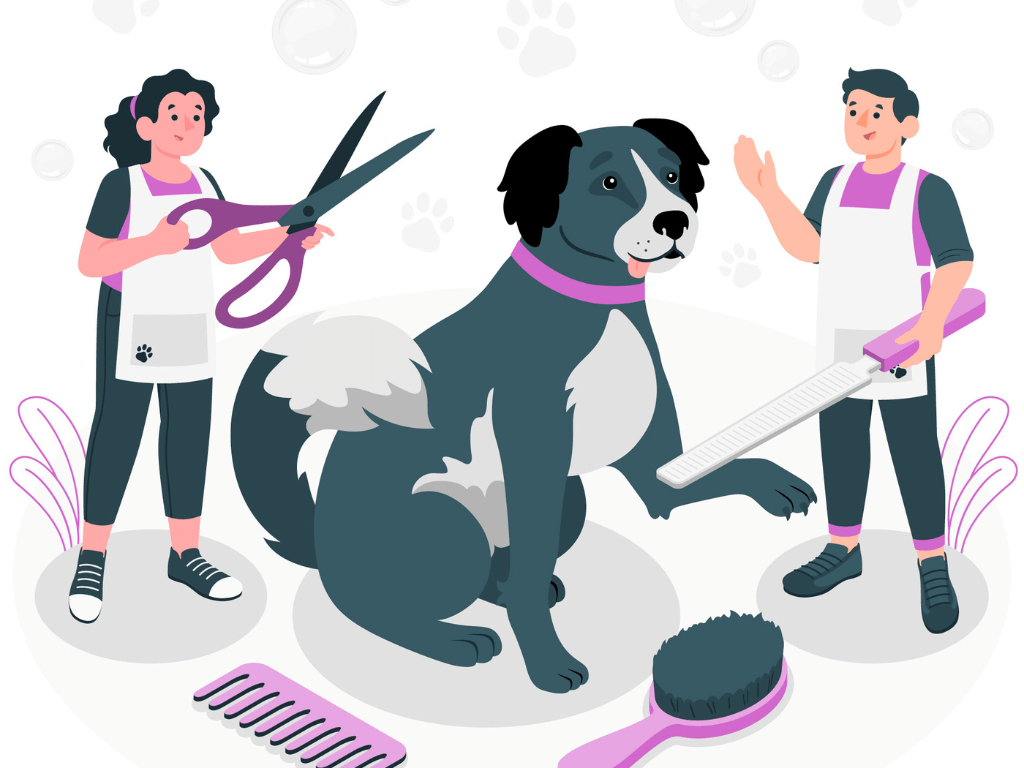
In today’s digital world, technology has transformed the way we approach pet grooming. From smart devices to mobile apps, modern tools can simplify grooming routines and ensure your pet stays in top condition. Here’s how you can use technology to take your pet grooming game to the next level.
1. Smart Grooming Tools
Advanced grooming tools, like automatic brushes and sensor-equipped clippers, are making grooming more efficient. These devices adjust their speed and pressure to match your pet’s comfort level, reducing the risk of injury.
For instance, smart nail grinders provide a safer, quieter option for trimming nails, making the process stress-free for anxious pets. Explore affordable, high-tech grooming tools at AppSumo to enhance your routine.
2. Grooming Apps
Mobile apps designed for pet care can help you track grooming schedules, set reminders, and learn proper techniques. Some apps even offer tutorials for tasks like trimming nails or cleaning ears. These resources are particularly useful for new pet owners who are still mastering the basics.
Popular Apps to Try:
- PawTrack: Tracks your pet’s grooming history.
- Groomer’s Guide: Provides step-by-step tutorials for home grooming.
3. Virtual Consultations
If you’re unsure about a grooming technique or need pet advice, many groomers now offer virtual consultations. Through video calls, you can receive personalized guidance without leaving your home.
4. Wearable Devices for Health Monitoring
Wearable tech like pet fitness trackers can provide insights into your pet’s activity level and overall health. While not about grooming, these devices help you spot changes in behavior. They could indicate issues like allergies or skin irritation. Early detection allows you to adjust grooming routines accordingly.
5. Online Marketplaces for Grooming Supplies
Gone are the days of visiting multiple stores to find the right grooming tools. Online platforms offer a wide variety of products tailored to your pet’s needs. For budget-friendly, high-quality grooming solutions, check out AppSumo.
Quick Tips for Using Technology in Grooming
- Invest in smart devices designed for pet-specific needs to make grooming more efficient.
- Use grooming apps to stay consistent with schedules and techniques.
- Always choose trusted platforms for purchasing grooming tools and supplies.
FAQs About Pet Grooming
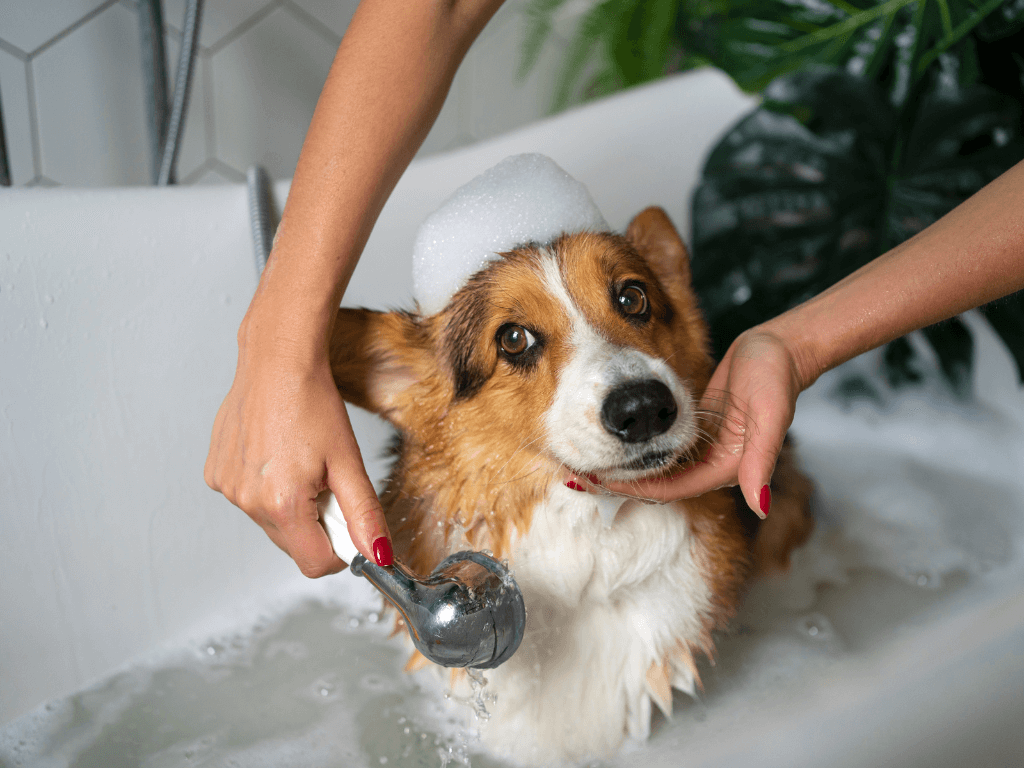
Here are some FAQs about pet grooming. They will help you understand your pet’s needs and keep them healthy and happy.
1. How often should I groom my pet?
The frequency of grooming depends on the type and breed of your pet. Long-haired dogs may need daily brushing. Short-haired breeds can be brushed 1–2 times a week. Bathing should typically be done every 4–6 weeks unless your pet gets particularly dirty.
2. What are the best tools for at-home grooming?
For at-home grooming, you’ll need a slicker brush, nail clippers or a grinder, and pet-safe shampoo. A high-quality nail grinder, like the ones available at AppSumo, can make trimming easier and safer. Choose tools suited to your pet’s coat and size for the best results.
3. Can I groom my pet myself, or should I hire a professional?
This depends on your pet’s grooming needs and your skill level. Routine tasks like brushing and nail trimming can usually be done at home. For complex tasks, like haircuts or matted fur, a pro groomer is best.
4. How do I keep my pet calm during grooming?
Create a relaxing environment by choosing a quiet space and using soothing tones. Offering treats and taking breaks during longer sessions can help ease anxiety. For very anxious pets, try calming sprays or a pro groomer.
5. What should I do if I accidentally cut my pet’s skin or nails?
If you cut your pet’s skin, clean the wound with an antiseptic. Then, keep it covered until it heals. For nail injuries, use a styptic powder to stop bleeding. In both cases, monitor for signs of infection and consult your vet if needed.
6. Are there special grooming needs for older pets?
Yes, senior pets need gentler handling as they may have sensitive skin or joint pain. Use soft-bristle brushes and short grooming sessions. Trim nails to avoid discomfort from overgrowth. Consult your vet about any grooming concerns.
7. Can poor grooming affect my pet’s health?
Yes, neglecting grooming can cause matting, skin infections, and overgrown nails. It may also lead to behavioral issues. Regular grooming keeps your pet clean. It also helps spot early health problems.
Quick Grooming Resource
For all your grooming needs, from tools to expert tips, check out affordable solutions at AppSumo.
Conclusion: Why Grooming Matters for Your Pet
Grooming is more than just a routine; it’s an essential aspect of your pet’s overall health and happiness. Regular grooming keeps your pet clean and healthy. It also boosts their well-being. It also strengthens the bond between you and your furry friend, making them feel loved and cared for.
Be consistent and detail-oriented when you groom long-haired dogs. This includes brushing, trimming nails, and bathing. DIY pet grooming can save money and create bonding moments. But, professional groomers have the skills for complex tasks. A combination of both approaches can work best for many pet owners.
A healthy coat and skin start with proper nutrition. So, ensure your pet’s diet has omega fatty acids and proteins. They’re essential nutrients. Hydration and supplements are also key to a shiny coat and strong nails. Grooming should be a positive experience. Use calming techniques and rewards to make it enjoyable for your pet.
With the right tools and knowledge, you can make grooming easy and effective. Explore high-quality, affordable grooming products on AppSumo to simplify the process and provide the best care for your pet.
Regular grooming isn’t about looks-it’s about giving your pet the quality of life they deserve. Start building a grooming routine today, and watch your pet thrive!
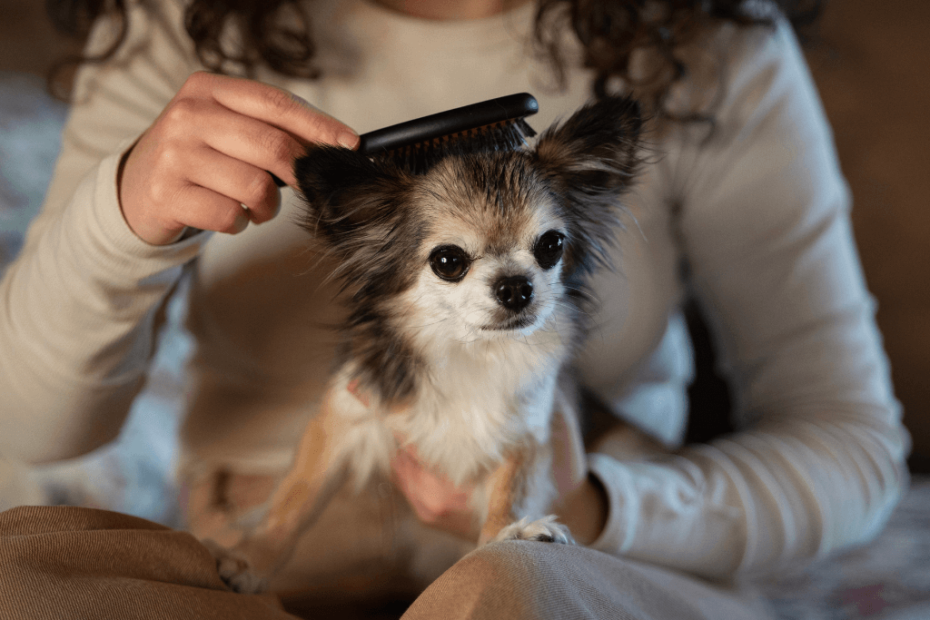
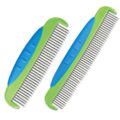
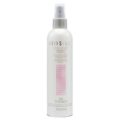
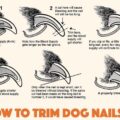
Pingback: Pawspera Pet Care: Your Guide to Holistic Pet Health and Wellness in 2024
Pingback: Pet Care Essentials: Your Complete Guide to a Happy, Healthy Pet in 2024
Pingback: Pet Wellness Hub:A One-Stop Resource for Pet Health & Happiness in 2024
Pingback: Essential Grooming Tools for Long-Haired Dogs: From Brushes to Clippers - Pawspera
Pingback: Best Grooming Tools for Dogs: Ultimate Guide to Pet Hair Management - Pawspera
Pingback: The Ultimate Cat Hygiene Guide: Comprehensive Care for a Healthy Feline Friend - Pawspera
Pingback: The Ultimate Guide to Dog Grooming Products: Tips, Reviews, and Best Practices - Pawspera
Pingback: Best Dog Shampoos for Ultimate Pet Care: Soothe, Cleanse, and Condition - Pawspera
Pingback: How to Groom a Long-Haired Cat: A Step-by-Step Guide for Pet Owners - Pawspera
Pingback: Dog Training Basics: Master Essential Techniques for a Well-Behaved Pet of 2024